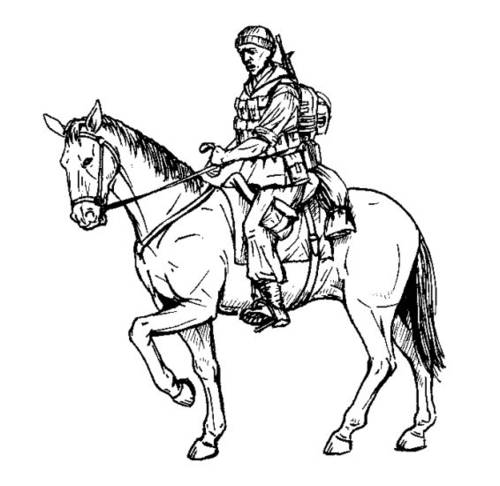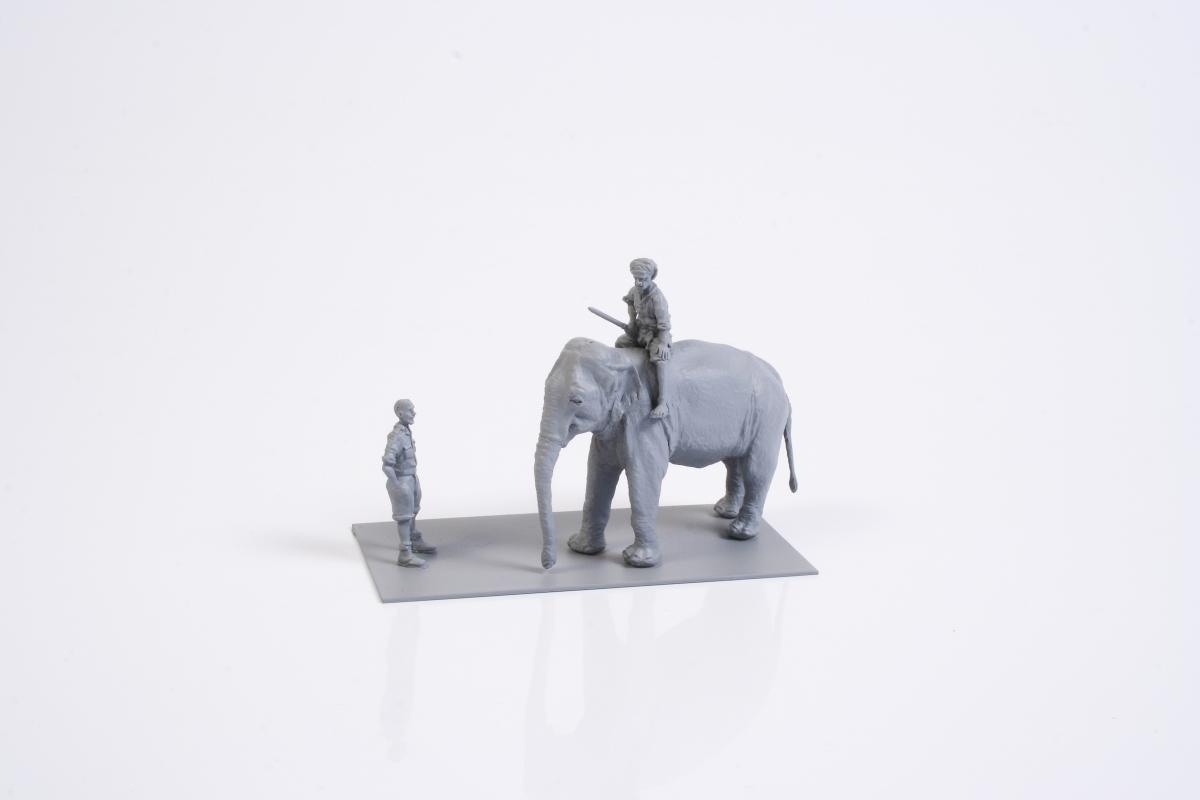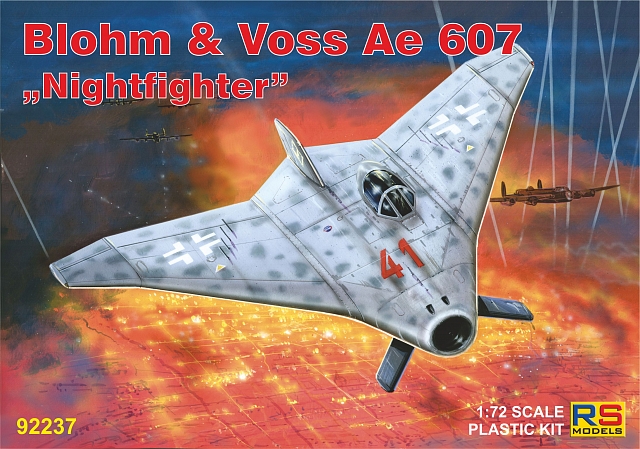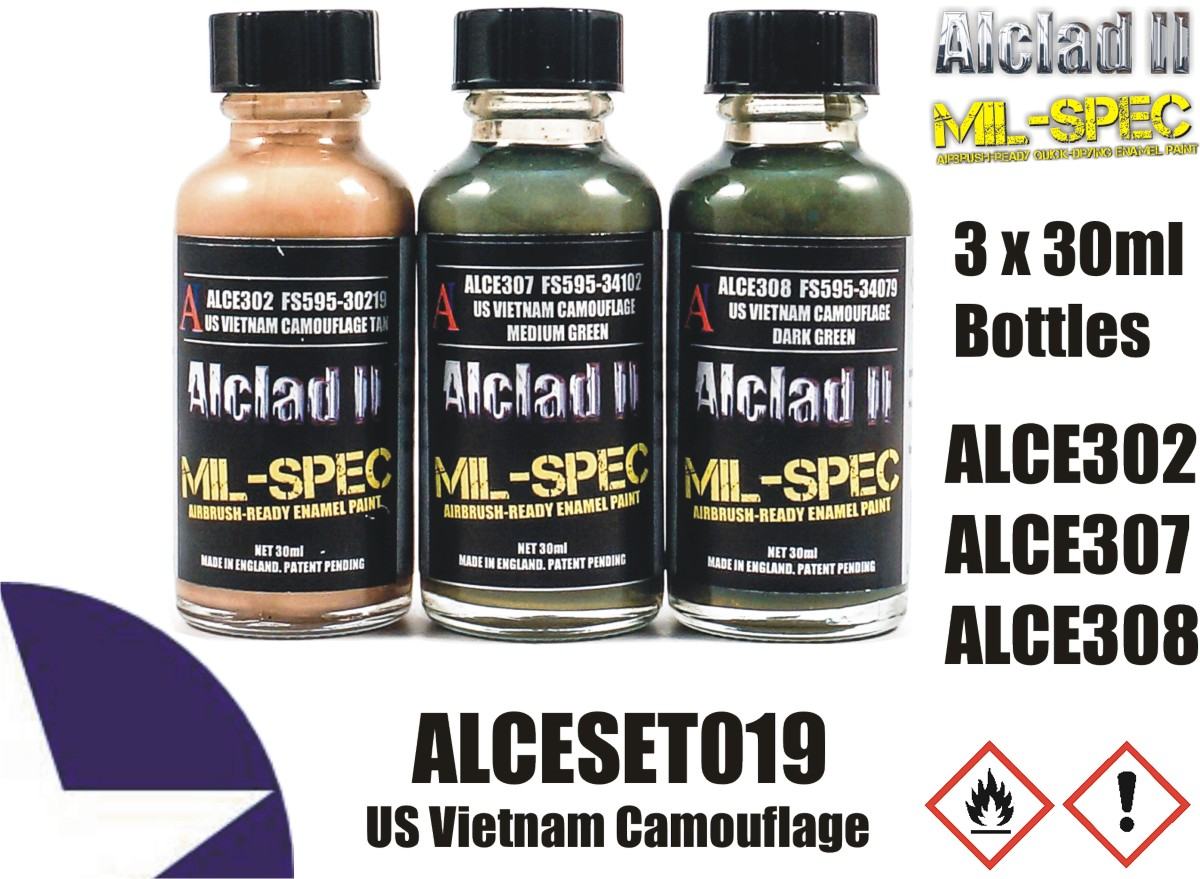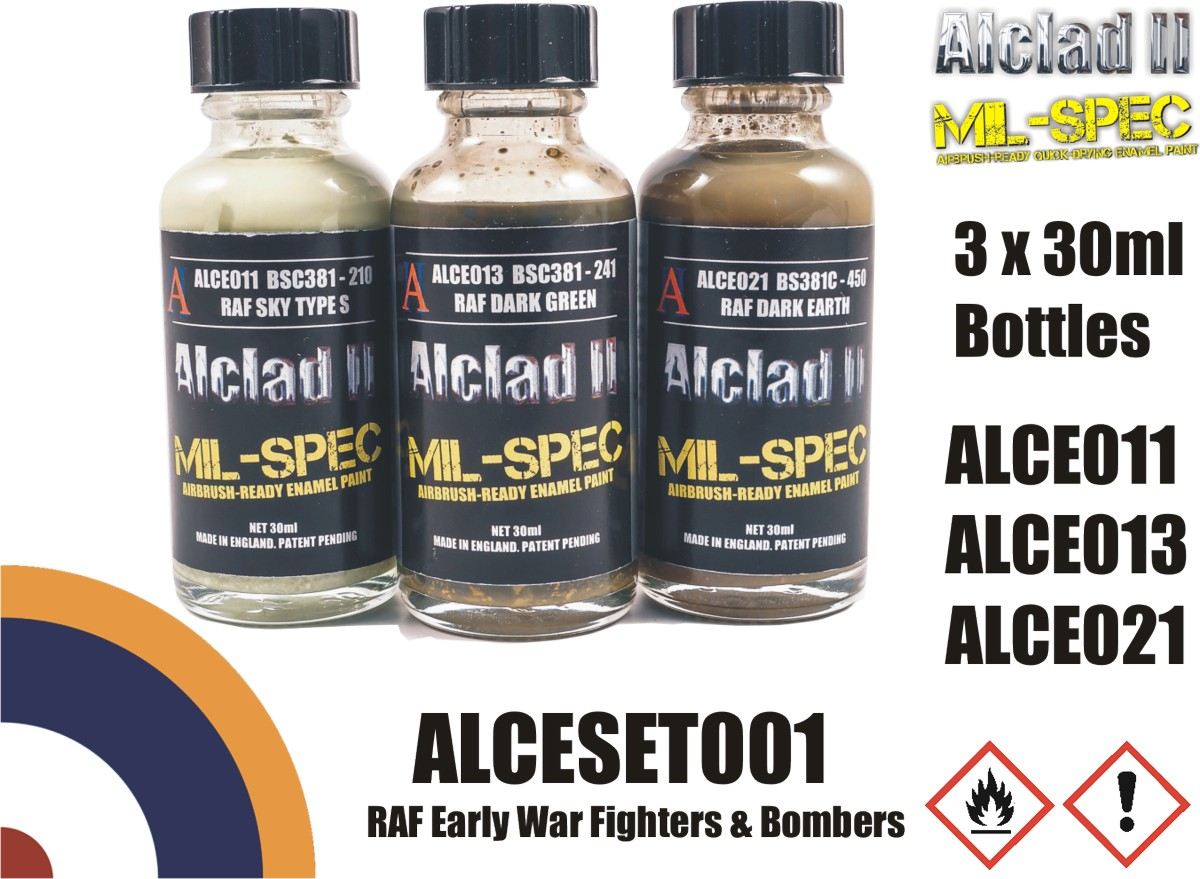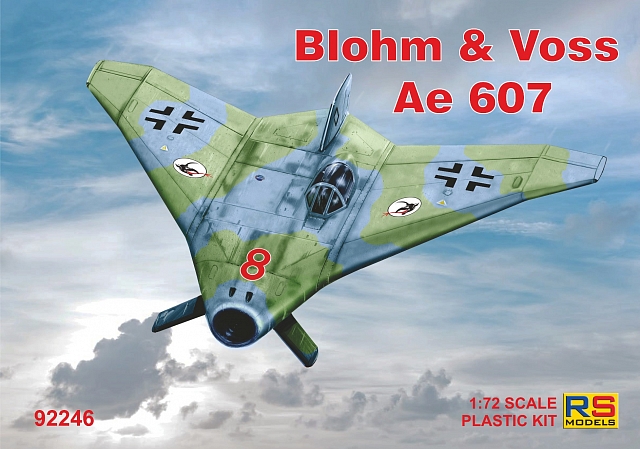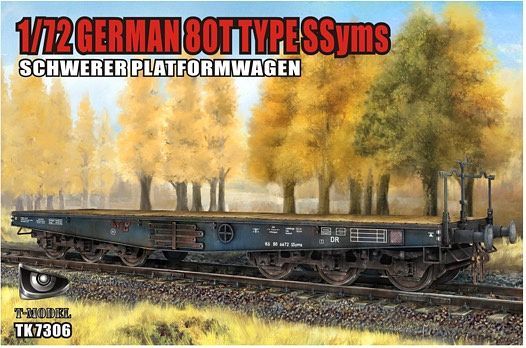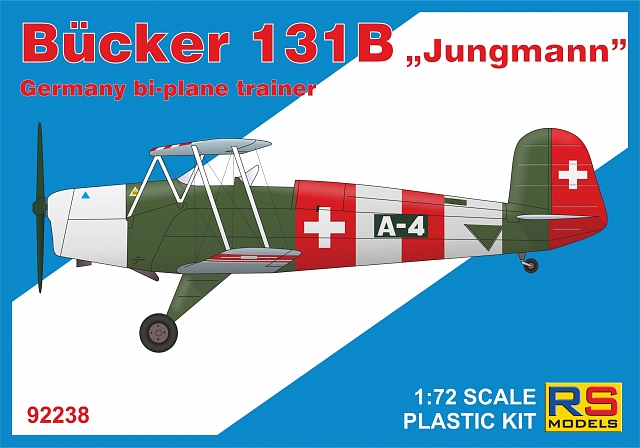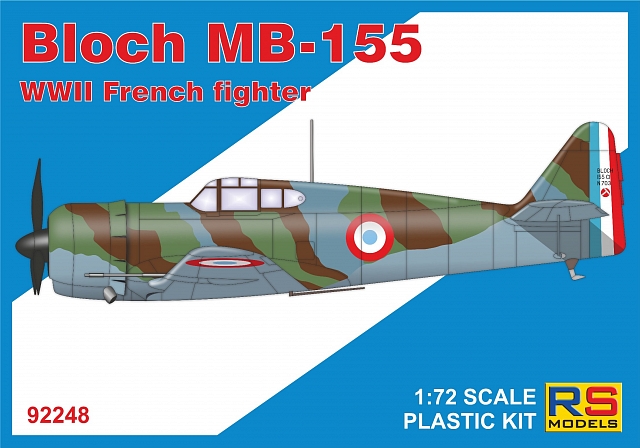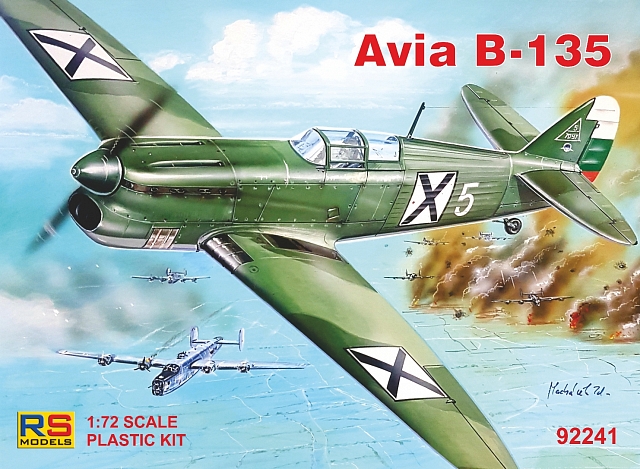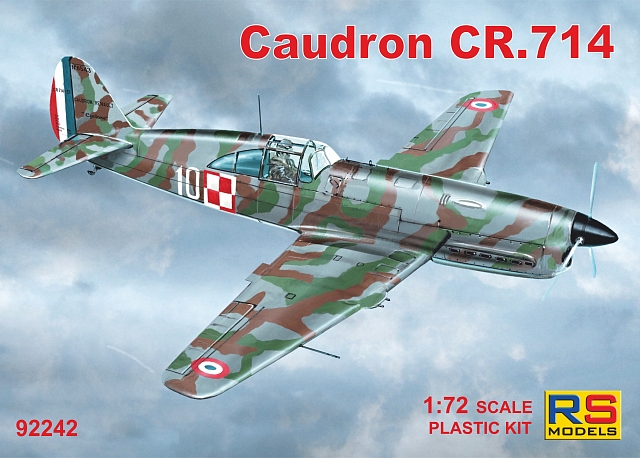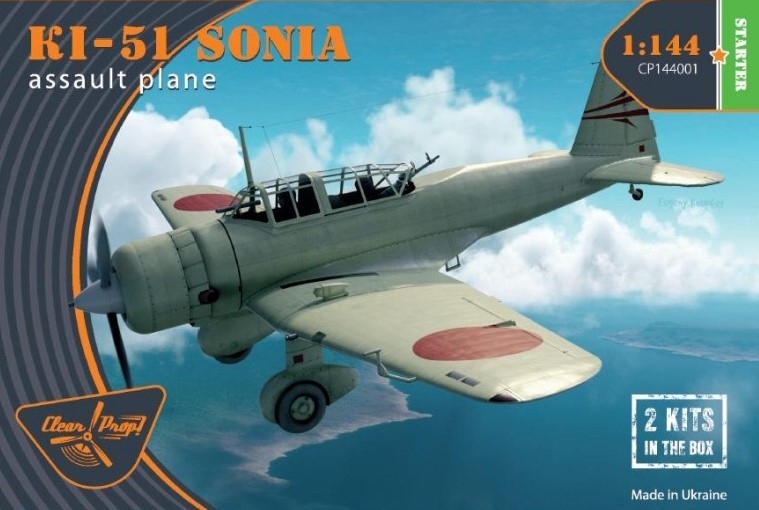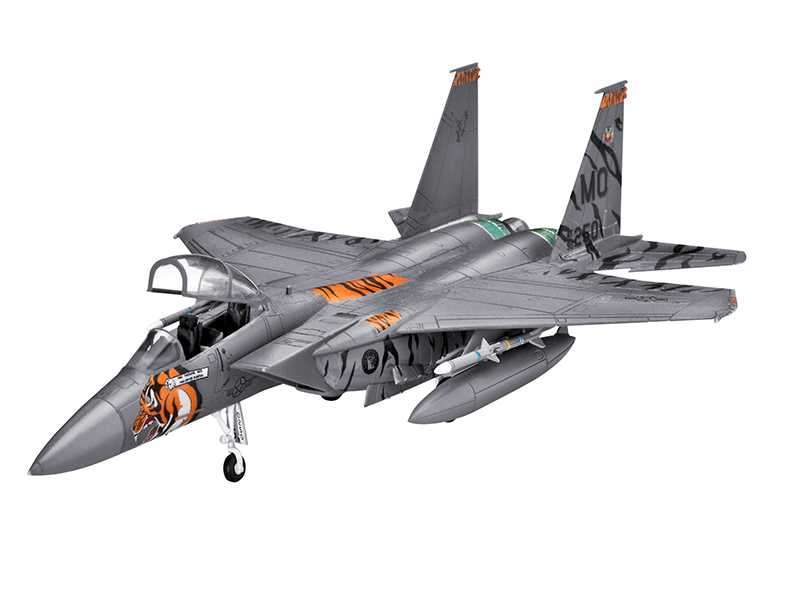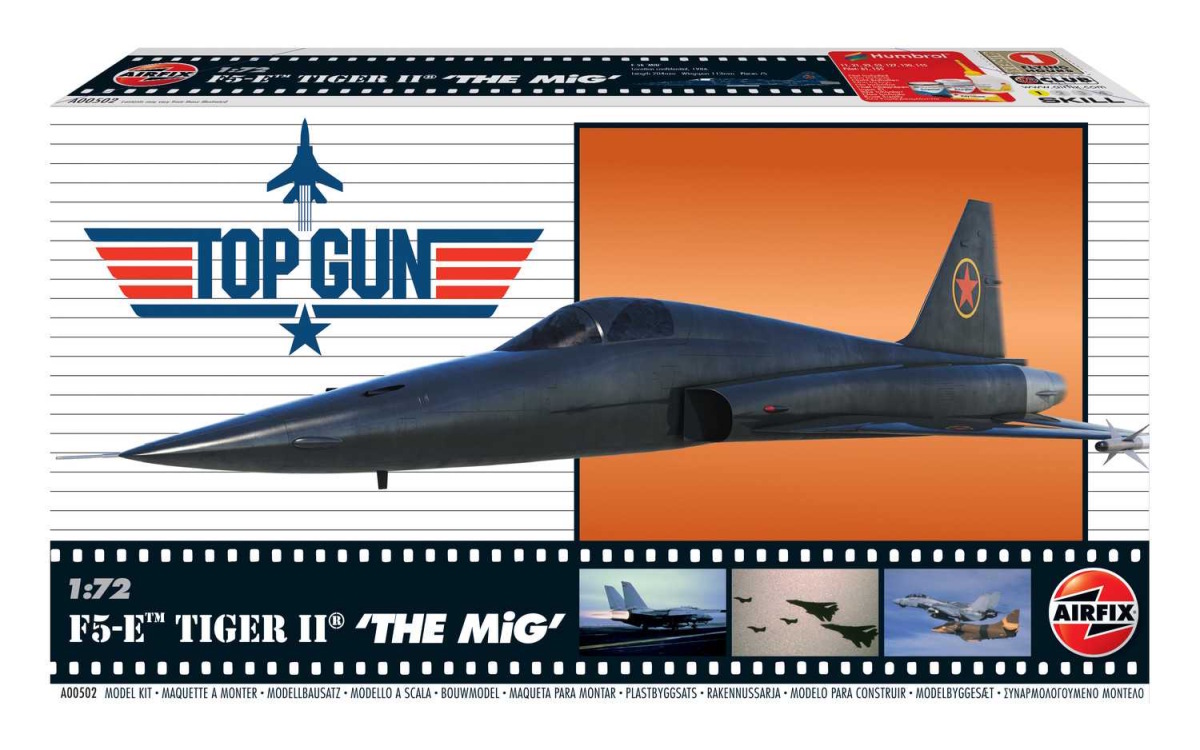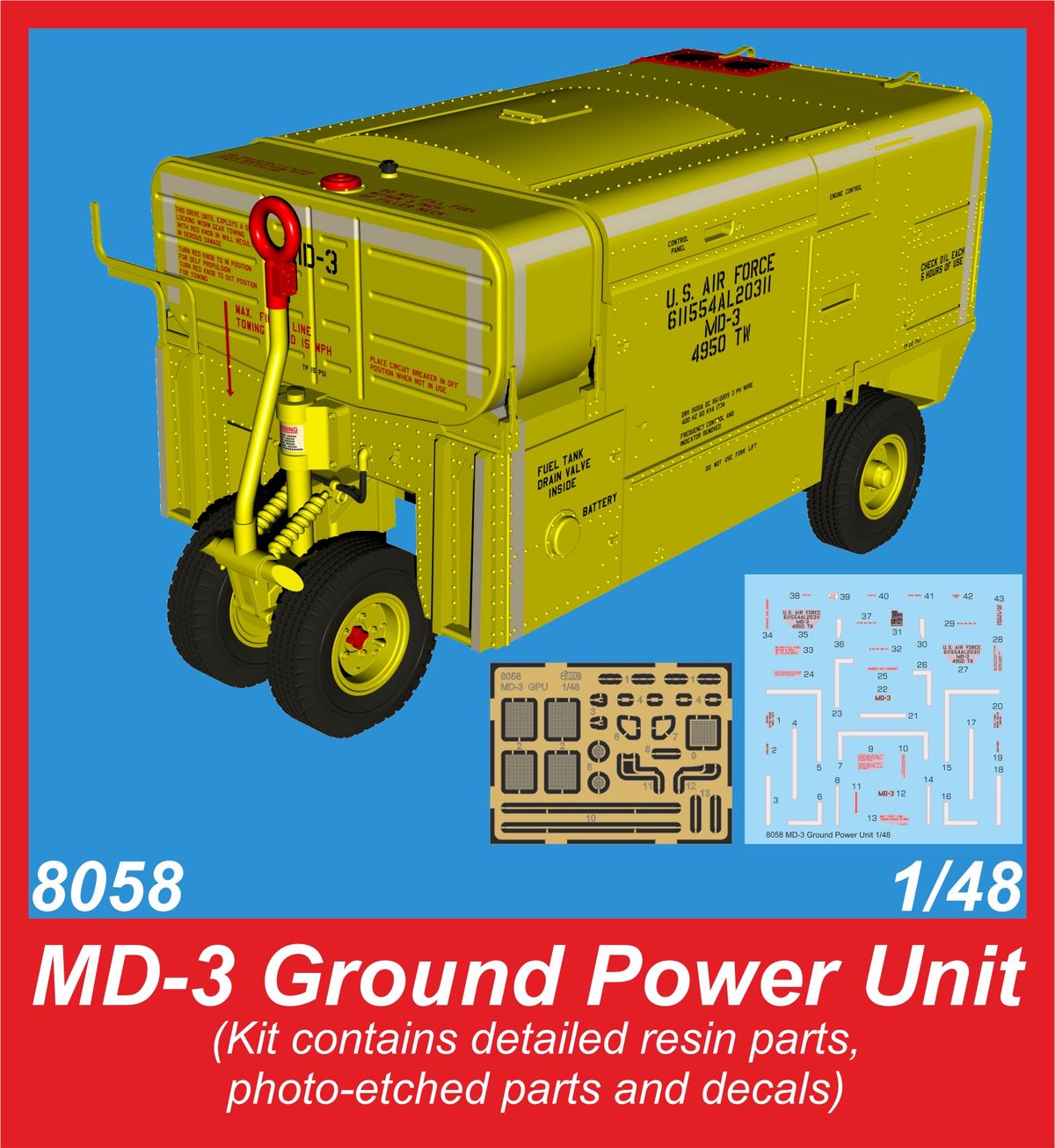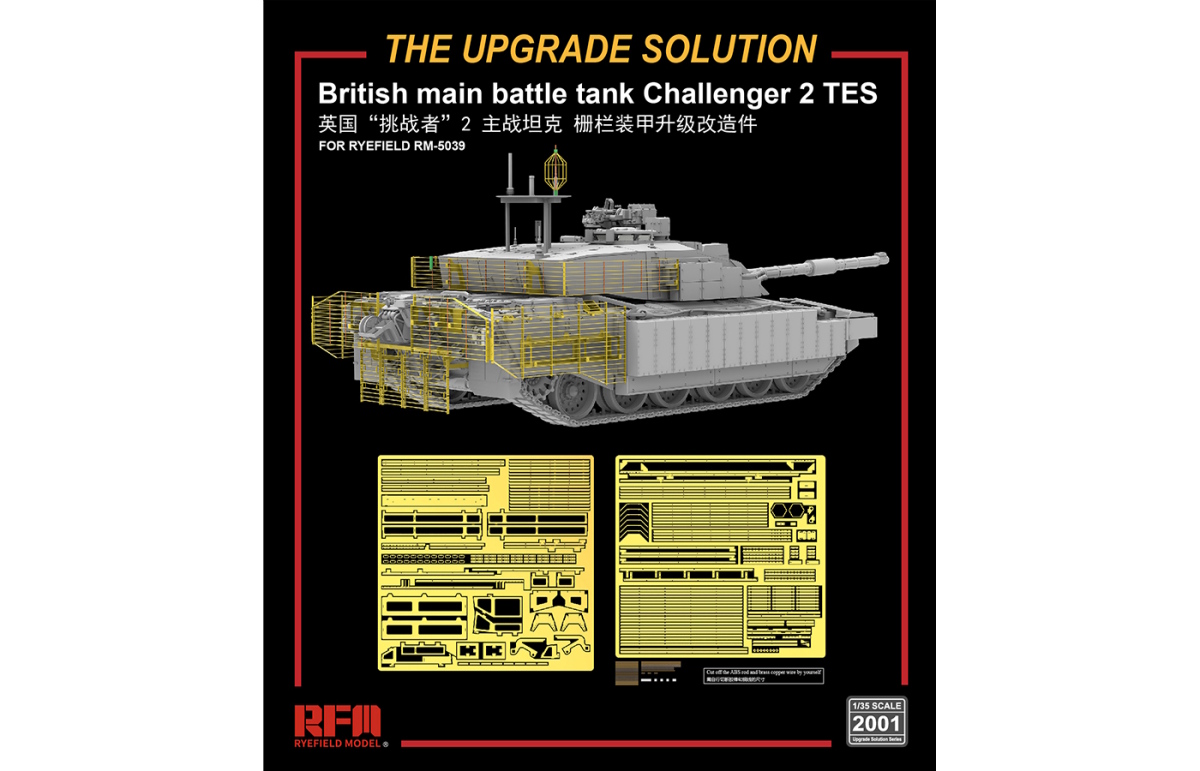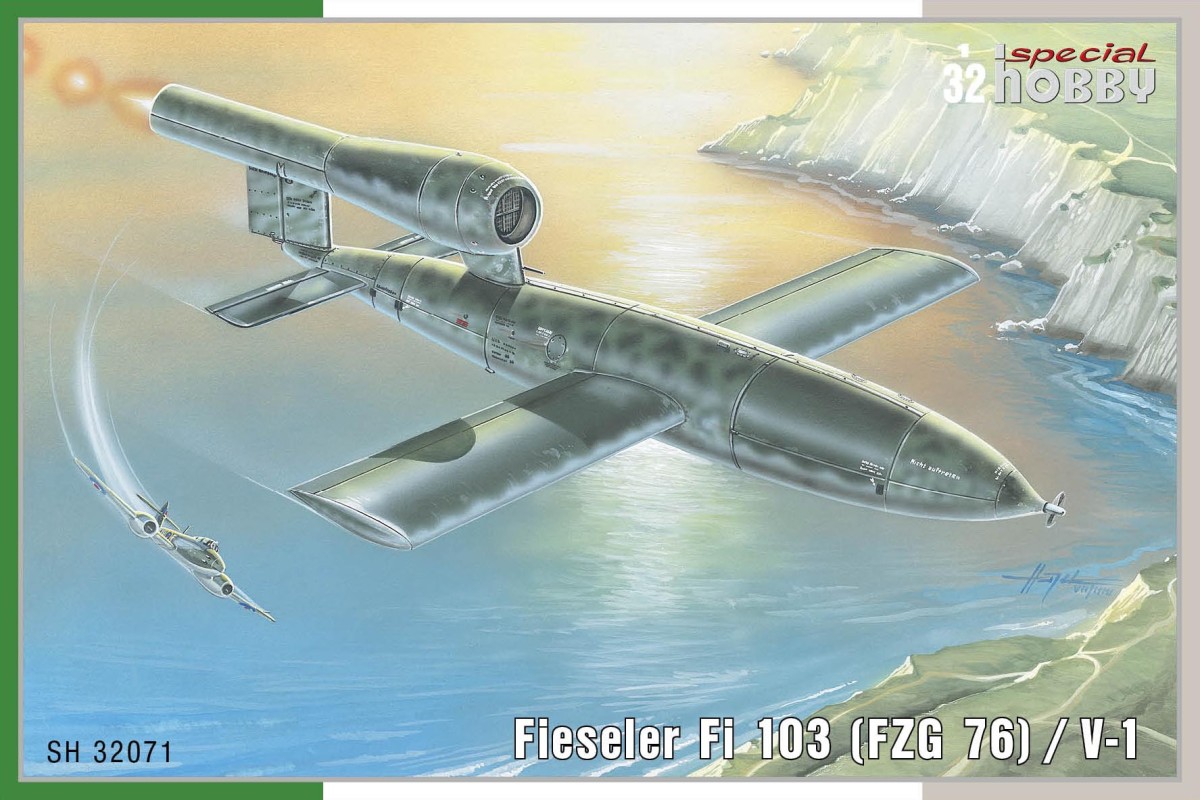Modely
Celkem 849 produktů
Model Kit letadlo 12329 - USN SBD-5 "Battle of the Philippine Sea" (1:48). Model letadla ke slepení. Velikost: 1:48; délka: 205 mm. Obtížnost: 4. Informace o modelu: Bitva o Filipínské moře. - Střemhlavý bombardér amerického námořnictva z druhé světové války. - Model lze složit se vzduchovou brzdou ve sklopené, přistávací nebo plně otevřené poloze. - Maskovací páska pro průhledné díly je součástí balení. - Díly z fotoleptaného kovu. - Obtisky Cartograf pro tři verze: • Americké námořnictvo, SBD-5VB-10, letadlová loď CV-6, 19. června 1944 • Americké námořnictvo, SBD-5VB-5, letadlová loď CV-10, říjen 1943 • Americká námořní pěchota SBD-5 „Bílá 1“ VMSB-231 „Pikové eso“, MAJ. Elmer G. Glidden & MSGT James Boyle. Marshallovy ostrovy. Jaro 1944. Detaily modelu: Měřítko: 1:48 Délka: 205 mm Výška: 83 mm Obtížnost: 4 Doporučeno pro děti od 13 let. Upozornění: Nebezpečí udušení! Výrobek obsahuje malé části. NEVHODNÉ PRO DĚTI DO 3 LET!
Model Kit letadlo 12329 - USN SBD-5 "Battle of the Philippine Sea" (1:48). Model letadla ke slepení. Velikost: 1:48; délka: 205 mm. Obtížnost: 4. Informace o modelu: Bitva o Filipínské moře. - Střemhlavý bombardér amerického námořnictva z druhé světové války. - Model lze složit se vzduchovou brzdou ve sklopené, přistávací nebo plně otevřené poloze. - Maskovací páska pro průhledné díly je součástí balení. - Díly z fotoleptaného kovu. - Obtisky Cartograf pro tři verze: • Americké námořnictvo, SBD-5VB-10, letadlová loď CV-6, 19. června 1944 • Americké námořnictvo, SBD-5VB-5, letadlová loď CV-10, říjen 1943 • Americká námořní pěchota SBD-5 „Bílá 1“ VMSB-231 „Pikové eso“, MAJ. Elmer G. Glidden & MSGT James Boyle. Marshallovy ostrovy. Jaro 1944. Detaily modelu: Měřítko: 1:48 Délka: 205 mm Výška: 83 mm Obtížnost: 4 Doporučeno pro děti od 13 let. Upozornění: Nebezpečí udušení! Výrobek obsahuje malé části. NEVHODNÉ PRO DĚTI DO 3 LET!
1/35 FMG 39 / FuSE 62 D Würzburg. Mobiles Funk-Messgerät / Flak-Messgerät / Funk-Sende-Empfangsgerät German WW2 Gun Laying Radar Product Details Highly detailed static plastic model Accurate details of D version Parabolic mirror foldable as in real Radar unit traversable and elevatable Finest bolt details Dipol DE 62 additional antennae included
1/35 FMG 39 / FuSE 62 D Würzburg. Mobiles Funk-Messgerät / Flak-Messgerät / Funk-Sende-Empfangsgerät German WW2 Gun Laying Radar Product Details Highly detailed static plastic model Accurate details of D version Parabolic mirror foldable as in real Radar unit traversable and elevatable Finest bolt details Dipol DE 62 additional antennae included
Plastikový model letadla 1/72 Blohm & Voss Ae 607 "Nightfighter" 4 decal v. for Luftwaffe. This flying wing fighter was only a study and was not included on the Project list. Because the HeS 011 jet engine was chosen as the power plant, the cockpit had to be moved off-center. The wing had a compound sweep, starting at 65 degrees and changing to 55 degrees. There were two fuel tanks, located in tandem on the starboard side of the air intake. Three MK 108 30 mm cannon were planned for the armament.
Plastikový model letadla 1/72 Blohm & Voss Ae 607 "Nightfighter" 4 decal v. for Luftwaffe. This flying wing fighter was only a study and was not included on the Project list. Because the HeS 011 jet engine was chosen as the power plant, the cockpit had to be moved off-center. The wing had a compound sweep, starting at 65 degrees and changing to 55 degrees. There were two fuel tanks, located in tandem on the starboard side of the air intake. Three MK 108 30 mm cannon were planned for the armament.
1/48 Ox Towing Me 163B with a Luftwaffe Ground Crew. At the final stages of WW2, the Third Reich faced serious shortage of fuel and to save the maximum amount possible, draft animals were used for taxiing aircraft on airfields, too. Even the most advanced jet and rocket-powered military aircraft such as the Me 262 or Me 163 were often seen in 1945 being towed like a mere middle ages style ox cart. This set contains a figure of a Luftwaffe groundcrew with a draft animal ready to tow a Me 163 Komet on the airfield (the figures have been sculpted based on a period photo. However, a photo of a Bf 109G being towed by such poor animal exists too). The draft animal offered in our set can be used in any other type of diorama as well. Country: Germany / WWII
1/32 Luftwaffe Ground Crew Pulling V1 on Trolley . To accompany our Fieseler Fi 103/ V-1 a SH32074 Fi 103A-1/ Re 4 Reichenberg model kits, our designers have sculpted two Luftwaffe ground crew member figures who are, in quite a relaxed manner, pulling a trolley with the V1 missile. This set can be utilized in a differend kind of diorama, too. Nationality: Germany / WWII
1/72 GERMAN 50T TYPE SSYS SCHWERER PLATFORMWAGEN. This is an injection-plastic military vehicle model kit. The Type SSys 50-ton armored railway flatbed car was used by the Germans to transport their heavy tanks during WWII. This kit includes two frets of photo-etched parts and decals for 2 markings versions. [Includes]: Photo-etched parts, decals for 2 versions
Plastikový model letadla 1/72 Blohm and Voss Ae 607 4 decal v. for Luftwaffe, Great Britain. Early in 1945, a Blohm & Voss (B&V) aircraft designer called Thieme began work on Drawing Number Ae 607, within the standard drawing numbering system at B&V. His design for a jet fighter was radically different from anything that B&V had done before. A flying wing, it approximated to a 45° delta planform. Reports of its existence were not confirmed until 2017, when the drawing was published. No Project number is recorded for the design and its intended status is unknown.[
1/72 GERMAN 80T TYPE SSYMS SCHWERER PLATFORMWAGEN. This is an injection-plastic military vehicle model kit. The Type SSyms 80-ton armored railway flatbed car was used by the Germans to transport their heavy tanks during WWII. This kit includes two frets of photo-etched parts and decals for 2 markings versions. [Includes]: Photo-etched parts, decals for 2 versions
Plastikový model letadla 1/72 Bücker Bü-131 B 5 decal v. for Switz, Bulgaria, Luftw., Spain, Finland. 5 decal variants1. Bücker 131B, Swiss AF, Lst, FL.Kp.55, Januar 19452. Bücker 131B, Spain AF, Tablada 19373. Bücker 131B, D-EBZE, Berlin Rangdorf 19374. Bücker 131B, Bulgarian AF, Airfield Sofia-Bozuriste 19405. Bücker 131B, Finnish Aeroclub, 1940The Bücker 131 was a biplane for aerobatic and training use. Was designed by Anders J. Anderson and first flew on April 1934. Production of the Bü 131A powered by an 80hp Hirth HM 60R began in the same year. First aircraft were delivered to the Luftwaffe in 1935 year. During 1936, was produced Bü 131B with powerful 105hp Hirth HM 504A-2 engine. Most produced was the version D. The aircraft was used by Luftwaffe as training, also by night ground-attack. Was also exported in many countries - Japan, Switzerland, Spain, Yugoslavia, Romania and Bulgaria. Under licence was built in Japan and after WWII also in Spain-CASA and Czechoslovakia as C-104 trainer with Walter Minor 4-III.
Plastikový model letadla 1/72 Bloch MB-155 5 decal v. for France, Luftwaffe. The Bloch MB.152 proved the definitive production model with nearly 500 produced. This version was powered by a Gnome-Rhone 14N-25/-49 series air cooled radial piston engine outputting at 1,100 horsepower depending on fitting. This was coupled to a three-bladed variable fixed propeller assembly. The combination supplied the aircraft with a top speed of 316 miles per hour with a range of 370 miles and service ceiling of 32,800 feet. 5 decal variants1. MB-155, No. 703, GC-1, Lt. Lefeuvre, Toulouse, June 19402. MB-155, No. 700, first prototype, France, December 19393. MB-155, No. 704, CO of 1 Escadrille, Capt. Coutaud, Agen, Algeria, June 19404. MB-155, No. 708, GC II/8, Vichy France Air-Force, 19415. MB-155, JG103, Luftwaffe, France 1943
Plastikový model letadla 1/72 Avia B-135 3 decal v. for Luftwaffe, Bulgaria. 3 decal variants1. Avia B-135 - flown on 30th March, 1944 by Jordan Ferdinandov, Bulgaria2. Avia B-135 - FVA Flugtechnische Versuchsanstalt Prag, Letnany 19403. Avia B-135 - Aviation school Dolna Mitropolya, Bulgaria, 1944During the summer of 1939, ing. Novotný and his team initiated considerable re-design and refiment of the B.35, and a new prototype, the B-135, was completed late in the year. The fuselage of the B-135 was essentially similar to that of the B.35.3, the HS 12 Ycrs engine and armament of one 20 mm cannon and two 7,7 mm machine guns were retained, as was the hydraulically-recractable main undercarriage members of the B.35.3 prototype, but a controllable-pitchairscrew was introduced, the rudder was enlarged, and an entirely new wing of all-metal construction was fitted.
Plastikový model letadla 1/72 Caudron CR.714 C-1 4 decal v. for France, Luftwaffe, Finland. 4 decal variants1. Caudron CR-714, 2nd Esc. GC 1/145, Dreux, A. Niewiara, June 19402. Caudron CR-714, 1st Esc. GC 1/145, Villacoublay, L. Uher, May 19403. Caudron CR-714, Finland, May 19414. Caudron CR-714, test aicraft, Luftwaffe 1940The first prototype was test flown in July 1938 and the first production machine, powered by a Renault 12R-03, was delivered in July 1939. The armament consisted of four 7,5mm MAC 1934 machine guns located in two wing gondolas. Only GC 1-145 was equipped with the Caudron C.714. It was a unit composed of Polish pilots under French command. They fought against the Luftwaffe in spring 1940 and despite the aircraft climbing, the highly battle motivated Polish pilots scored 8 confirmed victories with an overall loss of 7 pilots. Until the fall of France, more than 60 machines were produced and several were in progress. At least one machine was tested by the Luftwaffe.
1/72 GERMAN 80T TYPE SSYMS SCHWERER PLATFORMWAGEN. This is an injection-plastic military vehicle model kit. The Type SSyms 80-ton armored railway flatbed car was used by the Germans to transport their heavy tanks during WWII. This kit includes two frets of photo-etched parts and decals for 2 markings versions. [Includes]: Photo-etched parts, decals for 2 versions
Plastikový model letadla 1/72 Bloch MB-155 5 decal v. for France, Luftwaffe. The Bloch MB.152 proved the definitive production model with nearly 500 produced. This version was powered by a Gnome-Rhone 14N-25/-49 series air cooled radial piston engine outputting at 1,100 horsepower depending on fitting. This was coupled to a three-bladed variable fixed propeller assembly. The combination supplied the aircraft with a top speed of 316 miles per hour with a range of 370 miles and service ceiling of 32,800 feet. 5 decal variants1. MB-155, No. 703, GC-1, Lt. Lefeuvre, Toulouse, June 19402. MB-155, No. 700, first prototype, France, December 19393. MB-155, No. 704, CO of 1 Escadrille, Capt. Coutaud, Agen, Algeria, June 19404. MB-155, No. 708, GC II/8, Vichy France Air-Force, 19415. MB-155, JG103, Luftwaffe, France 1943
Plastikový model letadla 1/72 Caudron CR.714 C-1 4 decal v. for France, Luftwaffe, Finland. 4 decal variants1. Caudron CR-714, 2nd Esc. GC 1/145, Dreux, A. Niewiara, June 19402. Caudron CR-714, 1st Esc. GC 1/145, Villacoublay, L. Uher, May 19403. Caudron CR-714, Finland, May 19414. Caudron CR-714, test aicraft, Luftwaffe 1940The first prototype was test flown in July 1938 and the first production machine, powered by a Renault 12R-03, was delivered in July 1939. The armament consisted of four 7,5mm MAC 1934 machine guns located in two wing gondolas. Only GC 1-145 was equipped with the Caudron C.714. It was a unit composed of Polish pilots under French command. They fought against the Luftwaffe in spring 1940 and despite the aircraft climbing, the highly battle motivated Polish pilots scored 8 confirmed victories with an overall loss of 7 pilots. Until the fall of France, more than 60 machines were produced and several were in progress. At least one machine was tested by the Luftwaffe.
Plastikový model letadla 1/72 Avia B-135 3 decal v. for Luftwaffe, Bulgaria. 3 decal variants1. Avia B-135 - flown on 30th March, 1944 by Jordan Ferdinandov, Bulgaria2. Avia B-135 - FVA Flugtechnische Versuchsanstalt Prag, Letnany 19403. Avia B-135 - Aviation school Dolna Mitropolya, Bulgaria, 1944During the summer of 1939, ing. Novotný and his team initiated considerable re-design and refiment of the B.35, and a new prototype, the B-135, was completed late in the year. The fuselage of the B-135 was essentially similar to that of the B.35.3, the HS 12 Ycrs engine and armament of one 20 mm cannon and two 7,7 mm machine guns were retained, as was the hydraulically-recractable main undercarriage members of the B.35.3 prototype, but a controllable-pitchairscrew was introduced, the rudder was enlarged, and an entirely new wing of all-metal construction was fitted.
1/72 GERMAN 50T TYPE SSYS SCHWERER PLATFORMWAGEN. This is an injection-plastic military vehicle model kit. The Type SSys 50-ton armored railway flatbed car was used by the Germans to transport their heavy tanks during WWII. This kit includes two frets of photo-etched parts and decals for 2 markings versions. [Includes]: Photo-etched parts, decals for 2 versions
Plastikový model letadla 1/72 Bücker Bü-131 B 5 decal v. for Switz, Bulgaria, Luftw., Spain, Finland. 5 decal variants1. Bücker 131B, Swiss AF, Lst, FL.Kp.55, Januar 19452. Bücker 131B, Spain AF, Tablada 19373. Bücker 131B, D-EBZE, Berlin Rangdorf 19374. Bücker 131B, Bulgarian AF, Airfield Sofia-Bozuriste 19405. Bücker 131B, Finnish Aeroclub, 1940The Bücker 131 was a biplane for aerobatic and training use. Was designed by Anders J. Anderson and first flew on April 1934. Production of the Bü 131A powered by an 80hp Hirth HM 60R began in the same year. First aircraft were delivered to the Luftwaffe in 1935 year. During 1936, was produced Bü 131B with powerful 105hp Hirth HM 504A-2 engine. Most produced was the version D. The aircraft was used by Luftwaffe as training, also by night ground-attack. Was also exported in many countries - Japan, Switzerland, Spain, Yugoslavia, Romania and Bulgaria. Under licence was built in Japan and after WWII also in Spain-CASA and Czechoslovakia as C-104 trainer with Walter Minor 4-III.
Plastikový model letadla 1/72 Avro Rota C.30A 4 decal v. for Czeczslovak.,RAF, Yugoslavia, Australia. The first production design in the series was the C.30, a radial-engined autogyro with a three-blade, 37 ft (11.3 m) rotor mounted on an aft-leaning tripod, the control column extending into the rear of the two cockpits. The engine was the five-cylinder, 105 hp (78 kW) Armstrong Siddeley Genet Major I used in the C.19 series. The fabric-covered fuselage carried an unbraced tailplane, without elevators but with turned-up tips. The port side of the tailplane had an inverted aerofoil section to counter roll-axis torque produced by the propeller. As with most autogyros, a high vertical tail was precluded by the sagging resting rotor, so the dorsal fin was long and low, extending well aft of the tailplane like a fixed rudder and augmented by a ventral fin. The wide-track undercarriage had a pair of single, wire-braced legs and a small tail wheel was fitted. This model flew in April 1933. It was followed by four improved machines designated C.30P (P here for pre-production) which differed in having a four-legged pyramid rotor mounting and a reinforced undercarriage with three struts per side. The rotor could be folded rearwards for transport. The C.30P used the more powerful (140 hp, 104 kW) seven-cylinder Armstrong Siddeley Genet Major IA radial engine.
Plastikový model letadla 1/72 Avro Rota C.30A 4 decal v. for Czeczslovak.,RAF, Yugoslavia, Australia. The first production design in the series was the C.30, a radial-engined autogyro with a three-blade, 37 ft (11.3 m) rotor mounted on an aft-leaning tripod, the control column extending into the rear of the two cockpits. The engine was the five-cylinder, 105 hp (78 kW) Armstrong Siddeley Genet Major I used in the C.19 series. The fabric-covered fuselage carried an unbraced tailplane, without elevators but with turned-up tips. The port side of the tailplane had an inverted aerofoil section to counter roll-axis torque produced by the propeller. As with most autogyros, a high vertical tail was precluded by the sagging resting rotor, so the dorsal fin was long and low, extending well aft of the tailplane like a fixed rudder and augmented by a ventral fin. The wide-track undercarriage had a pair of single, wire-braced legs and a small tail wheel was fitted. This model flew in April 1933. It was followed by four improved machines designated C.30P (P here for pre-production) which differed in having a four-legged pyramid rotor mounting and a reinforced undercarriage with three struts per side. The rotor could be folded rearwards for transport. The C.30P used the more powerful (140 hp, 104 kW) seven-cylinder Armstrong Siddeley Genet Major IA radial engine.
Plastikový model letadla 1/72 Blohm and Voss Ae 607 4 decal v. for Luftwaffe, Great Britain. Early in 1945, a Blohm & Voss (B&V) aircraft designer called Thieme began work on Drawing Number Ae 607, within the standard drawing numbering system at B&V. His design for a jet fighter was radically different from anything that B&V had done before. A flying wing, it approximated to a 45° delta planform. Reports of its existence were not confirmed until 2017, when the drawing was published. No Project number is recorded for the design and its intended status is unknown.[
ModelSet letadlo 63996 - F-15E Strike Eagle (1:144). Model letadla ke slepení. Velikost: 1:144; 13,2 cm. Balení obsahuje: 62 dílků ke slepení, lepidlo, štětec, barvičky 05, 74, 90 (5 ml). Stejně jako pro útočné mise zaměřené na pozemní cíle, při kterých nese náklad těžkých zbraní, používá se letoun F-15E i pro vzdušné útoky při napadání nepřátelských letadel. Plní také noční mise nebo lety za jakéhokoliv počasí. Svůj křest ohněm podstoupil v Iráku během Operace pouštní bouře v roce 1991. Jeho maximální rychlost se ve vysoké nadmořské výšce pohybuje kolem 2,5 Machu. Informace o modelu: - Nové tvary odlitků - Detailně zpracovaný povrch s vyrytými spoji plechového potahu letadla - Kokpit obsahující přístrojovou desku a vystřelovací sedadla - Detailně provedený podvozek - Dvě přídavné palivové nádrže pod křídla - Čtyři infračerveně naváděné střely Sidewinder Unikátní sada potisků pro letoun F-15E amerického letectva (USAF): - F-15E Strike Eagle "Tiger Meet of the Americas 2005" Barvy: - základní: 05, 74 - další: 09, 36, 45, 52, 76, 90, 91, 99, 364 Detaily modelu Měřítko 1:144 Počet dílů 62 Délka 132 mm Rozpětí křídel 89 mm Obtížnost 3 Detaily originálu Typ: vojenské letadlo Rok/období: 1984 Původ: USA Kapacita motoru: 2 x 13077 kp Rychlost: 2658 km/h Doporučeno pro děti od 10 let. Akrylová barva pro modeláře Revell Aqua Color (5 ml) Návod na použití: Vodou ředitelná akrylová barva. Před použitím barvu dobře promíchejte. Nanášejte štětcem, nebo stříkáním na suchý, čistý povrch. Nehořlavá báze, rychle zasychá – nebarvitelné po 1 hodině, úplně uschne za 2–3 hodiny, podle tloušťky vrstvy. V případě potřeby zřeďte vodou. Použitím nevhodného ředidla se může barva zničit! Čistí se ředidlem Revell Aqua Color Clean. Na stříkání se doporučuje ředění maximálně 20 - 25 %. Štětec a pomůcky ihned po použití vypláchněte vodou. Nádobku po použití pevně uzavřete. Po otevření spotřebujte co nejdříve, barva přístupem vzduchu zasychá. Chraňte před mrazem. Obsahuje Směs látek 5-chlor-2methylisothiazol-3(2H)on a 2-methylizothiazol3(2H)-on s chloridem hořečnatým a dusičnanem hořečnatým. Může vyvolat alergickou reakci. Upozornění: Uchovávejte mimo dosah dětí. Zneškodněte tento materiál a jeho obal ve sběrném místě pro zvláštní nebo nebezpečné odpady. Pozor! Nevhodné pro děti do 8 let. Děti mohou výrobek používat pouze pod dohledem dospělé osoby. Tekuté lepidlo na plasty Revell Contacta Professional Návod na použití: Vhodné na přesné lepení sestavovaných modelů. Balení s jehlovým aplikátorem. Lepidlo naneste na jednu plochu. Lepené plochy k sobě přitlačte mírným tlakem. Spoj schne 5-10 sekund, dokonale vytvrdne do 1 hodiny. Přečtěte a uschovejte. Varování! Obsahuje: n-Butylacetat. Hořlavá kapalina a páry. Může způsobit ospalost nebo závratě. Je-li nutná lékařská pomoc, mějte po ruce obal nebo štítek výrobku. Uchovávejte mimo dosah dětí. Před použitím si přečtěte údaje na štítku. Chraňte před teplem/jiskrami/otevřeným plamenem/horkými povrchy. Zákaz kouření.Tento výrobek není hračka!
ModelSet letadlo 63996 - F-15E Strike Eagle (1:144). Model letadla ke slepení. Velikost: 1:144; 13,2 cm. Balení obsahuje: 62 dílků ke slepení, lepidlo, štětec, barvičky 05, 74, 90 (5 ml). Stejně jako pro útočné mise zaměřené na pozemní cíle, při kterých nese náklad těžkých zbraní, používá se letoun F-15E i pro vzdušné útoky při napadání nepřátelských letadel. Plní také noční mise nebo lety za jakéhokoliv počasí. Svůj křest ohněm podstoupil v Iráku během Operace pouštní bouře v roce 1991. Jeho maximální rychlost se ve vysoké nadmořské výšce pohybuje kolem 2,5 Machu. Informace o modelu: - Nové tvary odlitků - Detailně zpracovaný povrch s vyrytými spoji plechového potahu letadla - Kokpit obsahující přístrojovou desku a vystřelovací sedadla - Detailně provedený podvozek - Dvě přídavné palivové nádrže pod křídla - Čtyři infračerveně naváděné střely Sidewinder Unikátní sada potisků pro letoun F-15E amerického letectva (USAF): - F-15E Strike Eagle "Tiger Meet of the Americas 2005" Barvy: - základní: 05, 74 - další: 09, 36, 45, 52, 76, 90, 91, 99, 364 Detaily modelu Měřítko 1:144 Počet dílů 62 Délka 132 mm Rozpětí křídel 89 mm Obtížnost 3 Detaily originálu Typ: vojenské letadlo Rok/období: 1984 Původ: USA Kapacita motoru: 2 x 13077 kp Rychlost: 2658 km/h Doporučeno pro děti od 10 let. Akrylová barva pro modeláře Revell Aqua Color (5 ml) Návod na použití: Vodou ředitelná akrylová barva. Před použitím barvu dobře promíchejte. Nanášejte štětcem, nebo stříkáním na suchý, čistý povrch. Nehořlavá báze, rychle zasychá – nebarvitelné po 1 hodině, úplně uschne za 2–3 hodiny, podle tloušťky vrstvy. V případě potřeby zřeďte vodou. Použitím nevhodného ředidla se může barva zničit! Čistí se ředidlem Revell Aqua Color Clean. Na stříkání se doporučuje ředění maximálně 20 - 25 %. Štětec a pomůcky ihned po použití vypláchněte vodou. Nádobku po použití pevně uzavřete. Po otevření spotřebujte co nejdříve, barva přístupem vzduchu zasychá. Chraňte před mrazem. Obsahuje Směs látek 5-chlor-2methylisothiazol-3(2H)on a 2-methylizothiazol3(2H)-on s chloridem hořečnatým a dusičnanem hořečnatým. Může vyvolat alergickou reakci. Upozornění: Uchovávejte mimo dosah dětí. Zneškodněte tento materiál a jeho obal ve sběrném místě pro zvláštní nebo nebezpečné odpady. Pozor! Nevhodné pro děti do 8 let. Děti mohou výrobek používat pouze pod dohledem dospělé osoby. Tekuté lepidlo na plasty Revell Contacta Professional Návod na použití: Vhodné na přesné lepení sestavovaných modelů. Balení s jehlovým aplikátorem. Lepidlo naneste na jednu plochu. Lepené plochy k sobě přitlačte mírným tlakem. Spoj schne 5-10 sekund, dokonale vytvrdne do 1 hodiny. Přečtěte a uschovejte. Varování! Obsahuje: n-Butylacetat. Hořlavá kapalina a páry. Může způsobit ospalost nebo závratě. Je-li nutná lékařská pomoc, mějte po ruce obal nebo štítek výrobku. Uchovávejte mimo dosah dětí. Před použitím si přečtěte údaje na štítku. Chraňte před teplem/jiskrami/otevřeným plamenem/horkými povrchy. Zákaz kouření.Tento výrobek není hračka!
Classic Kit letadlo A00502 - Top Gun F5-E Tiger II "THE MIG" (1:72). Model letadla ke slepení. Měřítko: 1:72; velikost: 207 mm; počet dílů: 75; obtížnost: 2. Informace o modelu: Letouny “Mig-28”, které se objevily na začátku a poté i na konci prvního dílu filmu Top Gun, byly ve skutečnosti stíhačky Northrop F-5E Tiger pilotované příslušníky letek „agresorů“ amerického námořnictva. Tito fiktivní nepřátelé byli na konci filmu vítěznými esy Top Gunu konečně poraženi, bohužel však za cenu jedné ztráty. Detaily modelu: Měřítko: 1:72 Počet dílů: 75 Obtížnost: 2 Body Flying Hours: 1 Doporučeno pro děti od 8 let. Upozornění: Nebezpečí udušení! Výrobek obsahuje malé části. NEVHODNÉ PRO DĚTI DO 3 LET!
Classic Kit letadlo A00502 - Top Gun F5-E Tiger II "THE MIG" (1:72). Model letadla ke slepení. Měřítko: 1:72; velikost: 207 mm; počet dílů: 75; obtížnost: 2. Informace o modelu: Letouny “Mig-28”, které se objevily na začátku a poté i na konci prvního dílu filmu Top Gun, byly ve skutečnosti stíhačky Northrop F-5E Tiger pilotované příslušníky letek „agresorů“ amerického námořnictva. Tito fiktivní nepřátelé byli na konci filmu vítěznými esy Top Gunu konečně poraženi, bohužel však za cenu jedné ztráty. Detaily modelu: Měřítko: 1:72 Počet dílů: 75 Obtížnost: 2 Body Flying Hours: 1 Doporučeno pro děti od 8 let. Upozornění: Nebezpečí udušení! Výrobek obsahuje malé části. NEVHODNÉ PRO DĚTI DO 3 LET!
1/48 MD-3 Ground Power Unit. The MD-3 ground power unit was used throughout the 50s and 60s to generate electric power for starting up engines of such USAF aircraft as were the B-47, T-33 and many other with the same power requirements. The master parts of our kit have been 3D designed and produced on a 3D printer. The set also contains a PE fret and a sheet of decals. Operators: USA/modern
1/48 MD-3 Ground Power Unit. The MD-3 ground power unit was used throughout the 50s and 60s to generate electric power for starting up engines of such USAF aircraft as were the B-47, T-33 and many other with the same power requirements. The master parts of our kit have been 3D designed and produced on a 3D printer. The set also contains a PE fret and a sheet of decals. Operators: USA/modern
Plastikový model letadla 1/72 SB2A-4 Buccaneer ‘US Marines Bomber’ . The SB2A dive bomber aircraft was designed by Brewster during WW2 to be operated primarily from aircraft carriers. Although the type was produced in several various versions, it was used only for training. The British military used the type under their own name of Bermuda. A similar version was also developed for the air force of Dutch East Indies (ML-KNIL), but in the end was not delivered as the Dutch surrendered. The SB2A-3 saw service with the US Navy whilst the dash 4 variety, as brought to you in our recent release, belonged to the US Marines inventory. The decal sheet offers markings for three US Marines airframes bearing both the two- and three-colour schemes and one fictious machine as it might have looked like had it been acquired by the Dutch. US naval dive bomber the SB2A-4 was operated by the Marines decals for three US Marines options and one as would have been flown by Dutch East Indies (they in fact wanted to buy the type) the kit contains resin parts and etches
Plastikový model letadla 1/72 SB2A-4 Buccaneer ‘US Marines Bomber’ . The SB2A dive bomber aircraft was designed by Brewster during WW2 to be operated primarily from aircraft carriers. Although the type was produced in several various versions, it was used only for training. The British military used the type under their own name of Bermuda. A similar version was also developed for the air force of Dutch East Indies (ML-KNIL), but in the end was not delivered as the Dutch surrendered. The SB2A-3 saw service with the US Navy whilst the dash 4 variety, as brought to you in our recent release, belonged to the US Marines inventory. The decal sheet offers markings for three US Marines airframes bearing both the two- and three-colour schemes and one fictious machine as it might have looked like had it been acquired by the Dutch. US naval dive bomber the SB2A-4 was operated by the Marines decals for three US Marines options and one as would have been flown by Dutch East Indies (they in fact wanted to buy the type) the kit contains resin parts and etches
Plastikový model letadla 1/32 Fieseler Fi 103 / V-1. A model of the German unmanned missile, the infamous V-1 flying bomb which was designed and used for terror bombing of London and the UK. When the Allies invaded France, the missiles were also aimed at Antwerp, Liege and Brussels, both from land-based launch sites and aircraft. The kit contains three grey styrene sprues, a decal sheet and full colour instruction leaflet. The decals cater for three machines wearing different styles of camouflage schemes. detailed and extremely accurate model never kitted before in this scale contains not just the missile, but its handling trolley too the camouflage options show different types of colour schemes worn accurate decals with stencils

